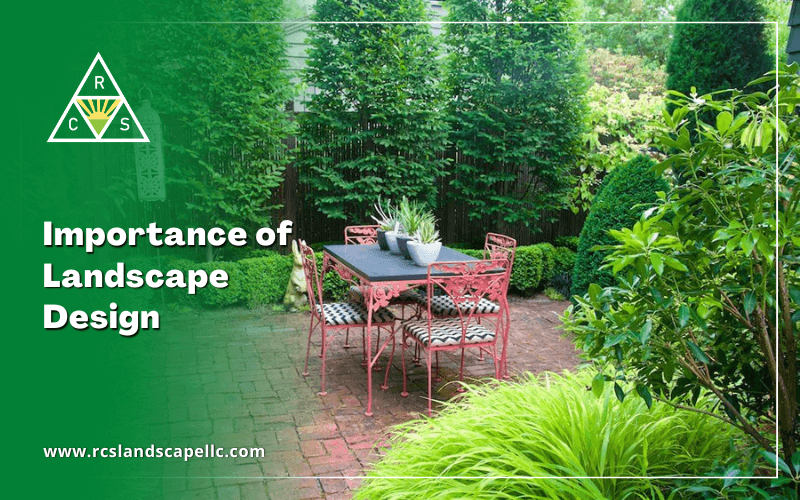How Landscape Design can Save You Time, Stress, and Money.
How Landscape Design can Save You Time, Stress, and Money.
Blog Article
Little Known Questions About Landscape Design.
Table of ContentsThe smart Trick of Landscape Design That Nobody is DiscussingHow Landscape Design can Save You Time, Stress, and Money.Some Known Facts About Landscape Design.What Does Landscape Design Do?
Official style theme. Credit: Gail Hansen, UF/IFAS The lawn is an expansion of the home where a range of tasks take area. A lawn can usually be separated into three areas: public (the front yard), private (the back backyard), and service (normally the side yard). The location of activity locations depends primarily on the sort of location, the dimension of room required, the sort of activity, and the wanted closeness to various other activities and structures (Landscape Design).
The outside wall of the house frequently works as the very first wall or starting factor of an outdoor area. Inappropriate usages need to be separated, and related tasks, such as cooking and dining, need to be created to make the backyard much more efficient and delightful. When using hardscape to create rooms, utilize building material similar to that made use of in the home for continuity from your home right into the yard.
Linked rooms. Credit History: Gail Hansen, UF/IFAS Using similar hardscape attributes and repeating plants pulls the eye around the yard.
This supplies a sense of mystery that advertises expedition and discovery of the landscape. From a design viewpoint, plant products have three major functions in the landscape: visual, architectural and practical. Aesthetically, plants develop a visually enjoyable setting and structurally plants organize and specify spaces. Plants are utilitarian because they can change the environment for the comfort of the user by changing light, temperature level and moisture.
What Does Landscape Design Mean?
For mental convenience plants are made use of as physical or suggested obstacles for privacy and safety. Physical obstacles block both the sight and accessibility to an area and consist of fences, walls and plant bushes. Landscape Design. Implied obstacles, generally reduced growing plants, obstruct gain access to but not the view (Number 9). Various other functions of plants consist of cleaning up the air, avoiding erosion and dirt loss, keeping dampness in the soil, and returning natural issue to the dirt.
Physical and implied obstacles. Debt: Gail Hansen, UF/IFAS For these reasons, the types of plants to be used (such as trees, bushes, or groundcovers) must be chosen in the beginning of planning. Plant types are chosen for their practical capacities to ensure that their future purpose and needed room can be taken into consideration at the very same time.
The above plane, the vertical plane and the ground aircraft should all be thought about to produce enclosure. Once the form of a plant bed has been developed, the plants ought to be massed (grouped) and layered home to accomplish aesthetic unity and the preferred quantity of unit. The size of a plant mass will certainly depend on the complete dimension of the lawn, the size of the individual plants in the mass, and the focus or effect desired from the plant product.
Each plant mass is in front of, behind, or following to, one more mass. Credit Scores: Gail Hansen, UF/IFAS Repeating plants within a mass and duplicating masses with similar plants ties the garden together. The individual plant characteristics have to be taken into consideration to effectively layer and mass plants.
6 Simple Techniques For Landscape Design
All plant make-ups start with the major framework plants, the large, mostly evergreen background plants-such as the trees and huge hedges. These plants separate or enframe areas, regulate the dimension of the space, and offer the beginning factor for selecting the ideal characteristics of the second layer, midground plants, for massing and infill.
Crucial points in the yard need to be highlighted by the use of special plants, distinct structures, or yard ornaments. Marking limits or entryways to areas can be made with entrances, arbors, and steps, or via using special and colorful plants. The form and/or style motif of the garden will frequently help establish the essential points and exactly how they need to be highlighted.
Other vital places in the backyard are centerpieces, which is used to visually organize a designed area. The kind of centerpiece frequently relies on the seeing point of view. Different viewpoints or viewpoints can reveal different structures in the landscape that may require a range of centerpieces. Contrasting texture, shape, size and shade will certainly capture and hold the eye.
About Landscape Design
Plant kinds. Credit History: Gail Hansen, UF/IFAS After kind, structure is the following leading feature of a plant; coarse, tool and great textures can be utilized for contrast and focus in the landscape.


The positive aroma of plants, the sound of wind in the trees, the noise and appearance of water, and the colors and appearances of sculptures, pots and yard furnishings all include in the experience of the garden. One detail that is commonly overlooked is the impact of light on the aesthetic appeals of the plants.
The whole yard adjustments in function and appearance over the read what he said course of the day, and the click this site program of a year, as the light and temperature level modification from morning to night and season to season. Plant selection have to think about a plant's development rate, its fully grown size and kind, and the maintenance it will certainly call for.
It is necessary to recognize the eventual fully grown dimension of plants so they can be positioned in the right area and spaced effectively when they are set up. Giving plants area to expand is a challenge due to the fact that the common mature dimension is generally based upon optimum growing problems and the environmental conditions of a site may cause a plant to expand larger or remain smaller.
Report this page